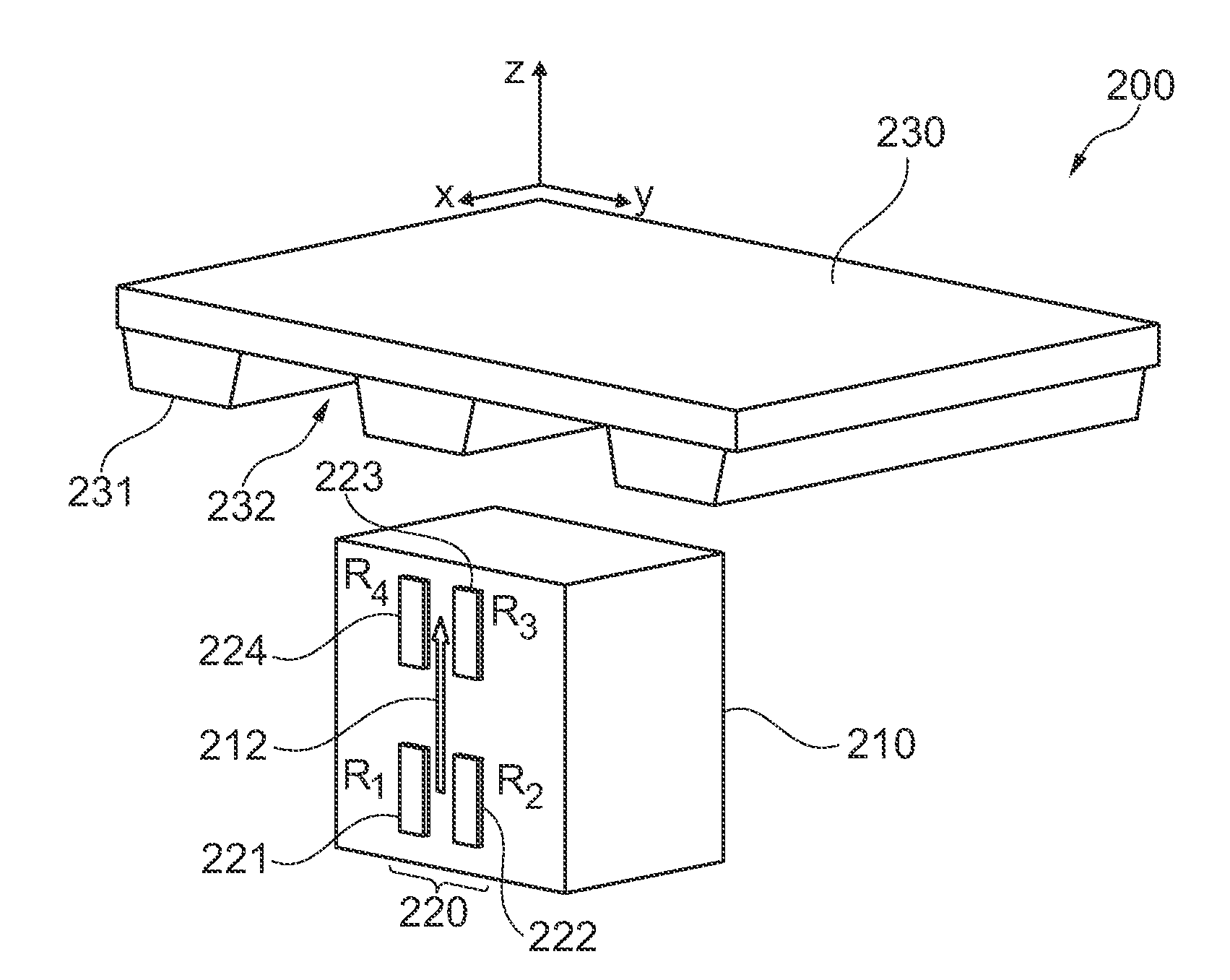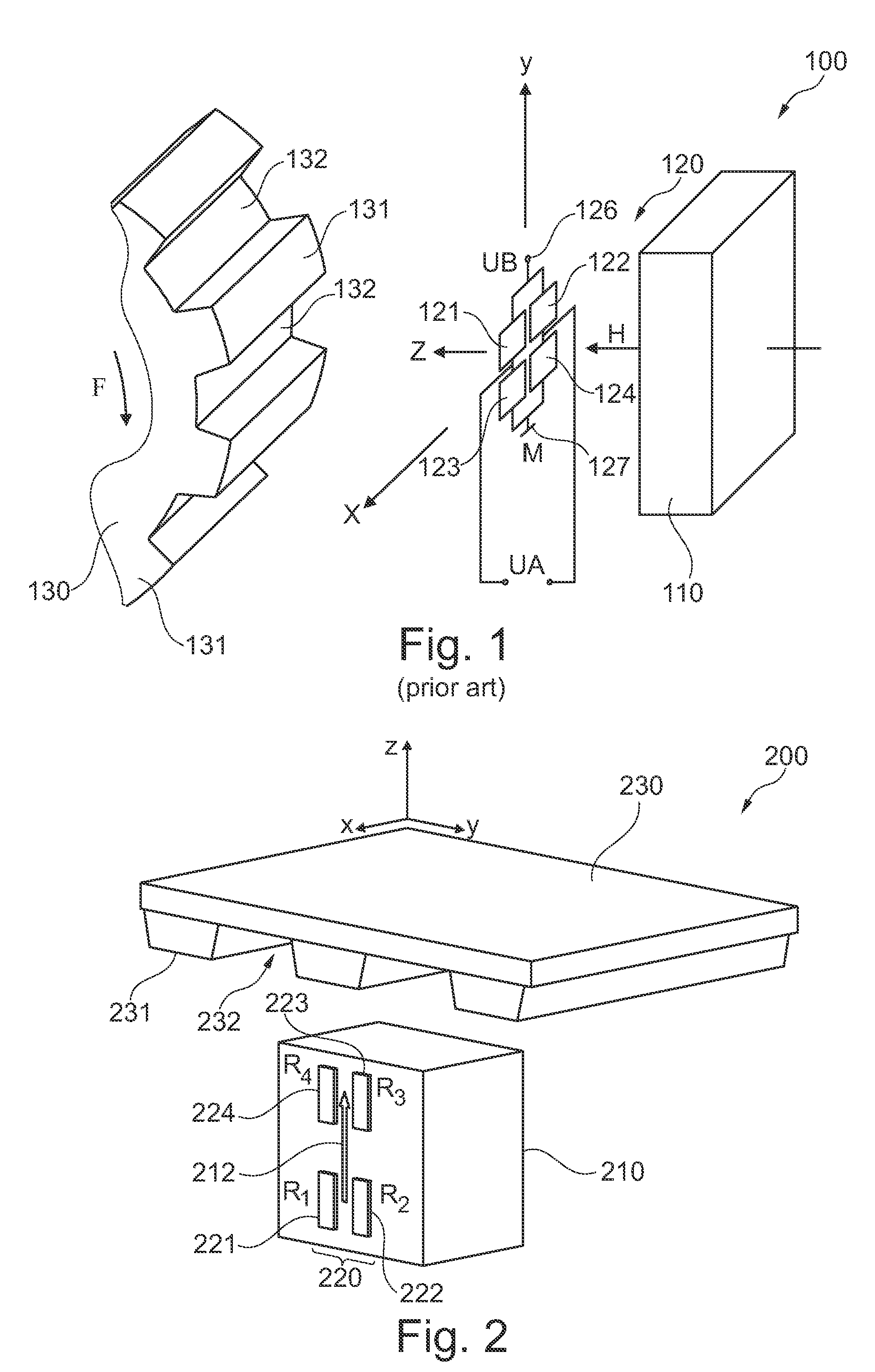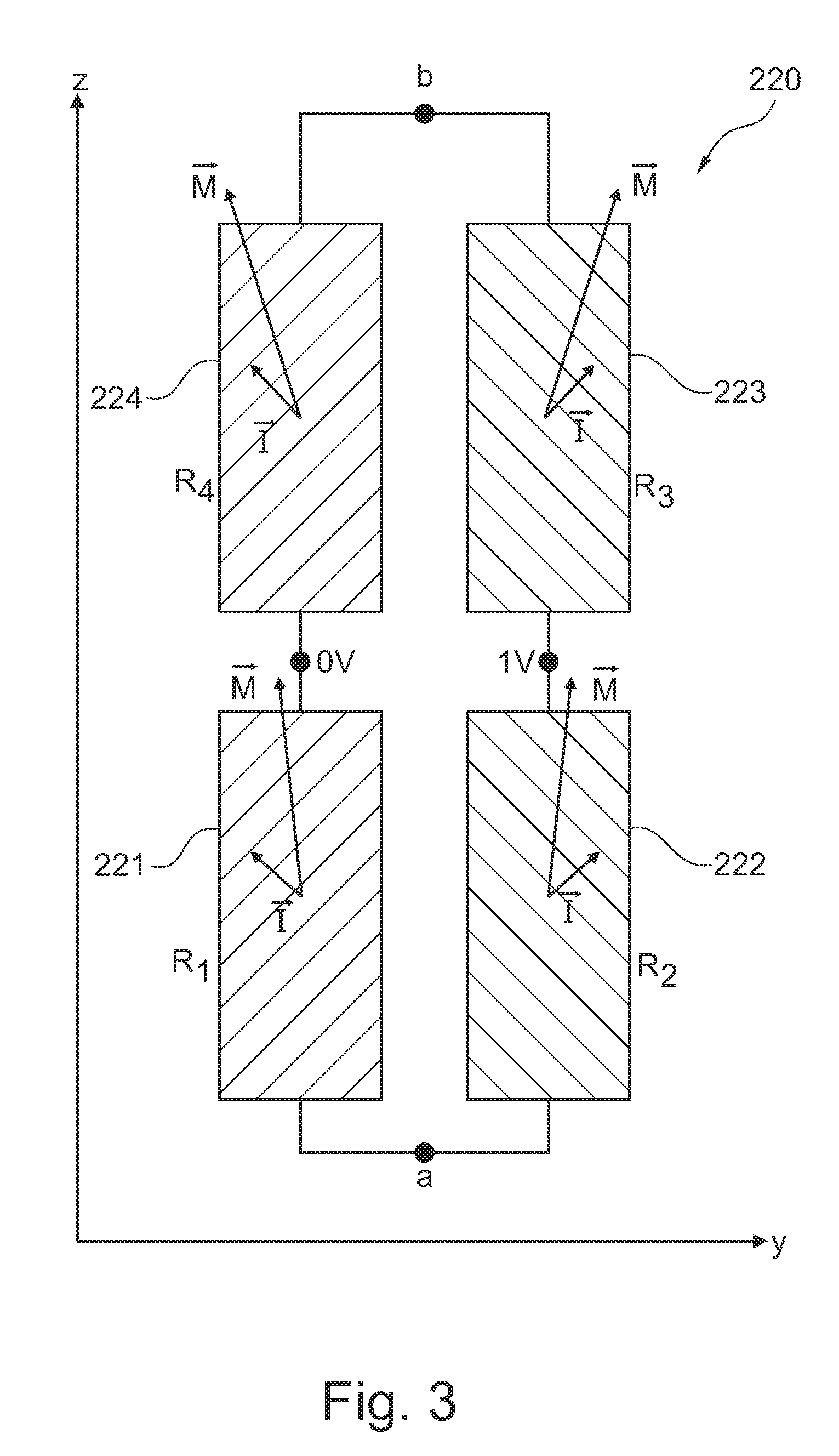Magnetic field sensor system with a magnetic wheel rotatable around a wheel axis and with magnetic sensor elements being arranged within a plane perpendicular to the wheel axis
a magnetic sensor and wheel axis technology, applied in the field of magnetic field sensors, can solve the problems of lorentz force dependent hall sensors and mts, comparatively low sensitivity and accuracy, and high cost of total sensor systems, and achieve the effect of improving the sensitivity of magnetic field sensors
- Summary
- Abstract
- Description
- Claims
- Application Information
AI Technical Summary
Benefits of technology
Problems solved by technology
Method used
Image
Examples
Embodiment Construction
[0042]The illustration in the drawing is schematically. It is noted that in different figures, similar or identical elements or features are provided with the same reference signs or with reference signs, which are different from the corresponding reference signs only within the first digit. In order to avoid unnecessary repetitions elements or features which have already been elucidated with respect to a previously described embodiment are not elucidated again at a later position of the description.
[0043]FIG. 1 shows a known magnetic field sensor system 100 for illustrating the basic physical principles of sensing a rotational movement by means of a magnetoresistive sensor arrangement 120 comprising four magnetoresistive sensor elements 121, 122, 123 and 124. As can be seen from FIG. 1, the magnetic field sensor system 100 comprises a biasing magnet 110 producing a biasing magnetic field H, the already mentioned magnetoresistive sensor arrangement 120 and an encoded soft magnetic w...
PUM
 Login to View More
Login to View More Abstract
Description
Claims
Application Information
 Login to View More
Login to View More - R&D
- Intellectual Property
- Life Sciences
- Materials
- Tech Scout
- Unparalleled Data Quality
- Higher Quality Content
- 60% Fewer Hallucinations
Browse by: Latest US Patents, China's latest patents, Technical Efficacy Thesaurus, Application Domain, Technology Topic, Popular Technical Reports.
© 2025 PatSnap. All rights reserved.Legal|Privacy policy|Modern Slavery Act Transparency Statement|Sitemap|About US| Contact US: help@patsnap.com



